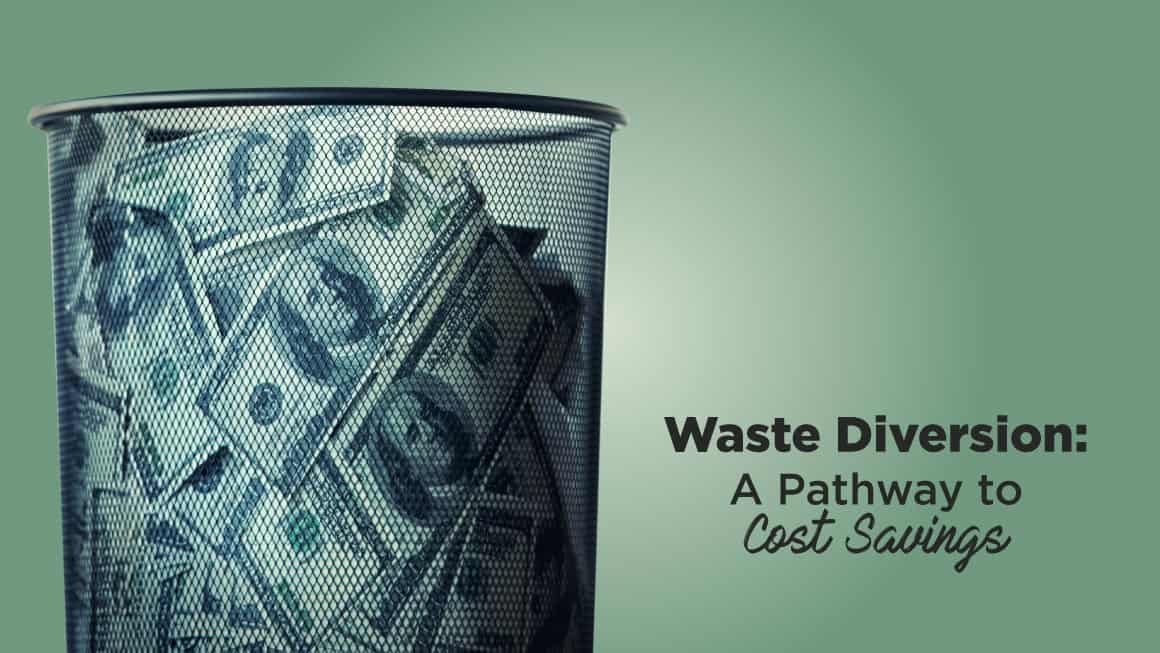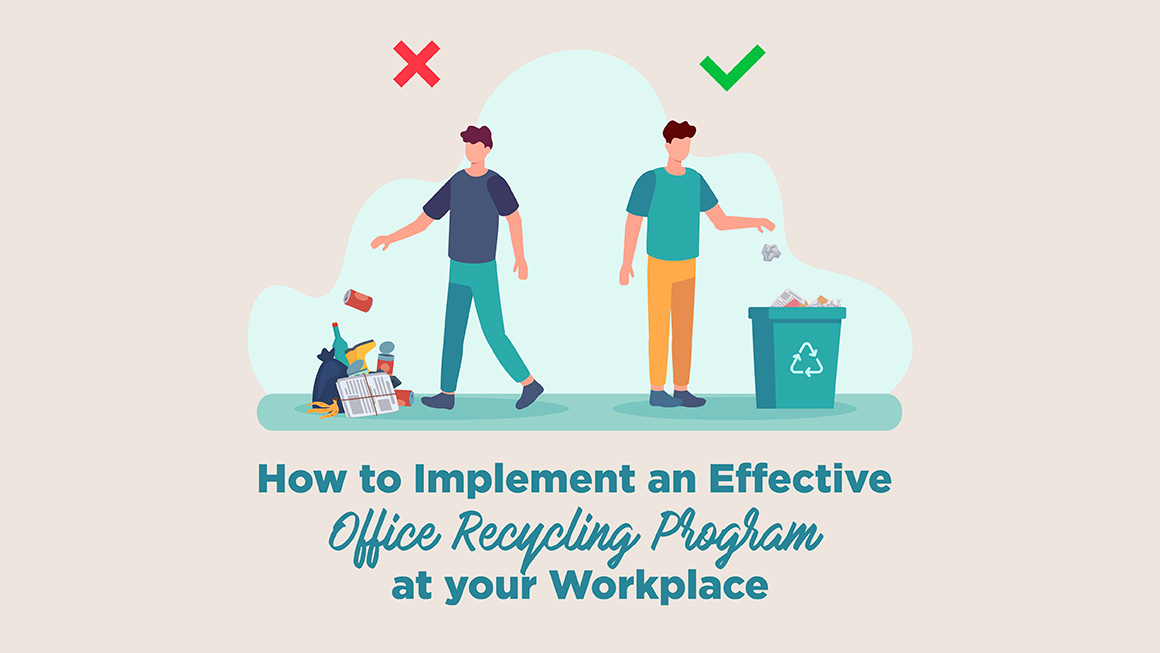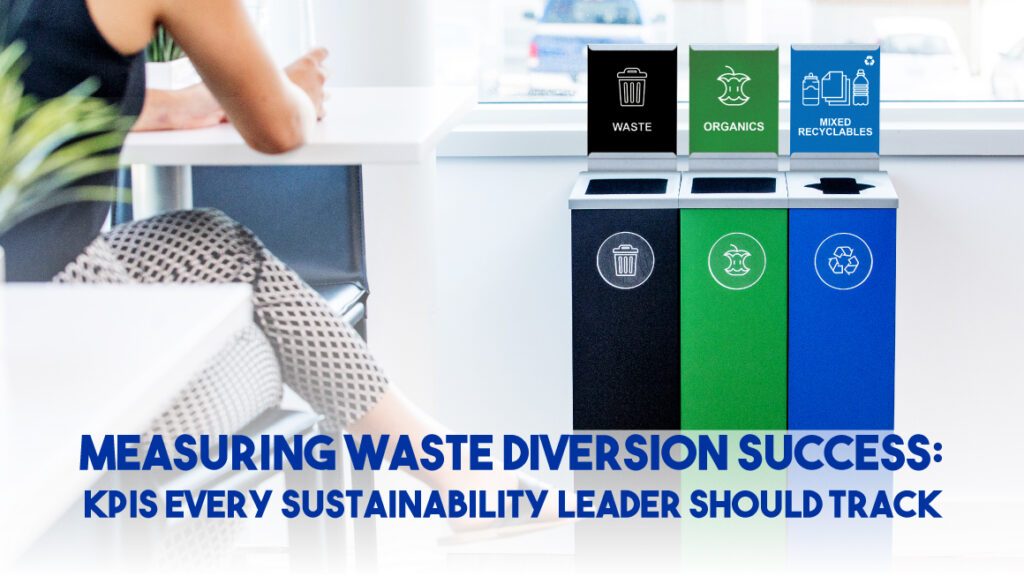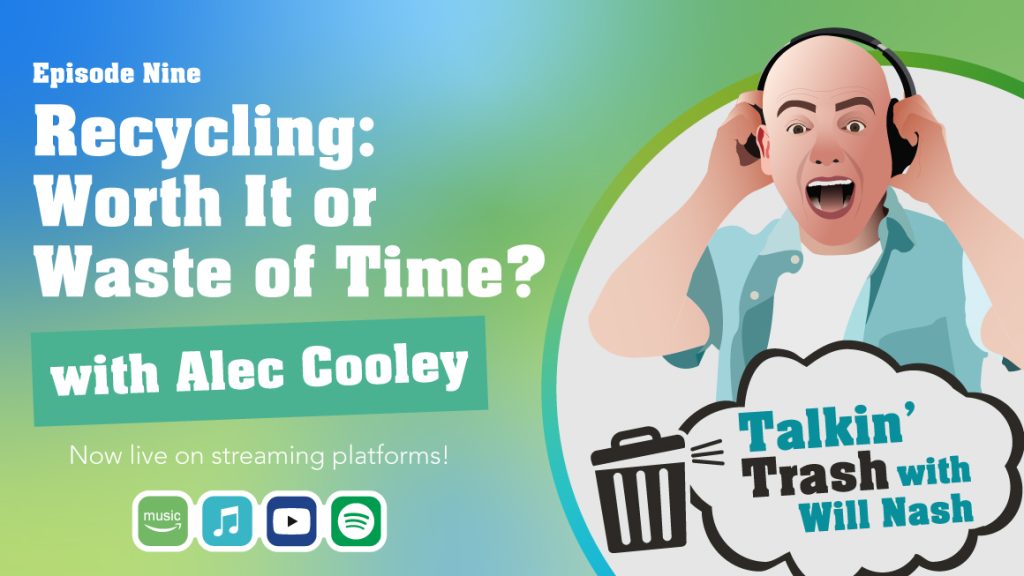Waste diversion is more than just a sustainability fad, it’s a business strategy. A well-designed waste diversion program not only benefits the environment but can also lead to substantial cost savings. Let’s delve deeper into how waste diversion can translate into a healthier planet and a stronger bottom line.
Understanding the Waste Stream: From Landfill to Opportunity
Waste diversion is a key strategy within a broader waste management system that refers to the practice of diverting waste from landfills by giving it a second life through reuse, recycling, and composting. While this may sound complex, it can offer long-term savings to organizations that adopt this method of waste management.
Before exploring these savings opportunities, let’s take a closer look at the traditional waste management equation and its associated expenses:
- Trash Collection and Disposal Fees: these fees can vary significantly depending on the volume, type, and location of your waste. The more trash you generate, the higher these costs climb.
- Custodial Costs: In office spaces, daily collection of personal trash bins means more custodial costs.
- Landfill Taxes: Landfills often charge additional fees on top of collection costs, creating a significant financial burden.
- Environmental Compliance Costs: Businesses must comply with regulations regarding waste disposal. This can involve obtaining permits, submitting reports, and facing potential fines for non-compliance.
Whether all or one of these expenses apply to your business, a well-structured waste diversion program can significantly reduce these costs by:
- Reducing Waste Volume: By diverting materials from landfills, businesses send less waste for collection and disposal, leading to direct cost savings on those fees.
- Lower Landfill Taxes: With less waste reaching landfills, businesses pay less in associated taxes.
- Lower Custodial Costs: By implementing a centralized waste diversion program, you can reduce the servicing frequency for your custodial staff, thereby saving on custodial costs.
- Revenue Generation: Turn your waste into income! Some recyclable materials, like paper, aluminum, and plastics, can be sold to recycling facilities which would then generate additional revenue streams.
- Reduced Energy Consumption: Internally recycling and reusing materials often requires less energy than producing new materials from scratch. This translates to lower energy bills for your business.
- Improved Facility Management: Efficient waste management systems optimize space utilization in your facilities. This can lead to reduced cleaning costs and improved overall organization.
While traditional waste management can be a significant financial burden, waste diversion offers a clear path to long-term cost savings. Implementing a waste diversion program might seem complex at first, but the potential cost savings and environmental benefits make it a worthwhile investment for any organization.
Beyond the Bottom Line: The Ripple Effect of Waste Diversion
The financial benefits of waste diversion are undeniable, but the positive impact extends far beyond the bottom line. Implementing a waste diversion program creates a ripple effect, leading to additional advantages:
- Enhanced Corporate Image: Demonstrate your environmental responsibility and commitment to sustainability. This attracts eco-conscious customers and strengthens your brand reputation.
- Employee Morale: A strong waste diversion program cultivates a positive work environment where employees feel empowered to contribute to a greener future. This can lead to increased employee morale and engagement.
- Regulatory Compliance: Stay ahead of the curve by ensuring your waste management practices comply with evolving environmental regulations.
- Resource Conservation: By diverting waste from landfills, you’re helping to conserve precious natural resources. This reduces the demand for virgin materials and promotes a more sustainable future.
By fostering a culture of sustainability, attracting eco-conscious consumers, and minimizing environmental impact, waste diversion becomes a strategic investment for any organization.
A Win-Win for Business and the Environment
Waste diversion isn’t just a trendy buzzword, it’s a powerful strategy that strengthens your bottom line while safeguarding our planet. By implementing a well-designed program, you can significantly reduce waste disposal costs, generate new revenue streams, and minimize your environmental footprint. Making the switch to waste diversion might seem daunting initially, but the long-term rewards are undeniable. For more information on implementing a waste diversion program, check out our blog: How to Implement an Effective Office Recycling Program at your Workplace.
Questions about waste diversion? Contact our team of sustainability experts for more information.
Additional Resources
Making Sense of Plastics Recycling, a Busch Systems Green Thinking Webinar program. Original air date: August 9, 2023
Making an Actionable Plan, a Busch Systems Green Thinking Webinar program. Original air date: June 13, 2023




